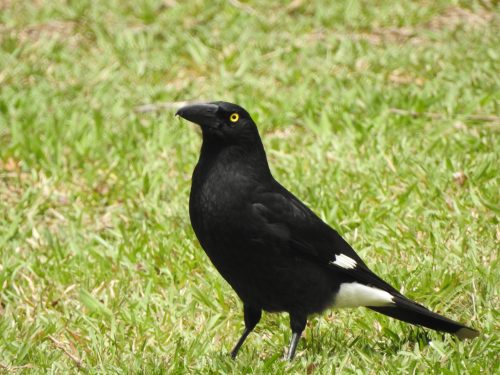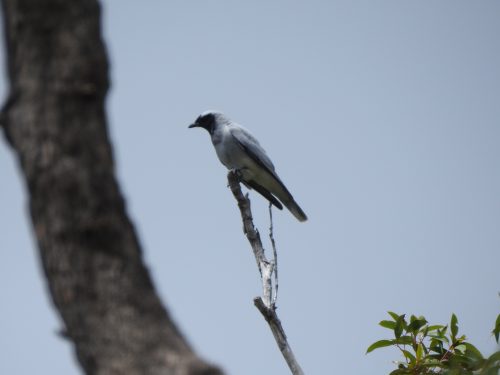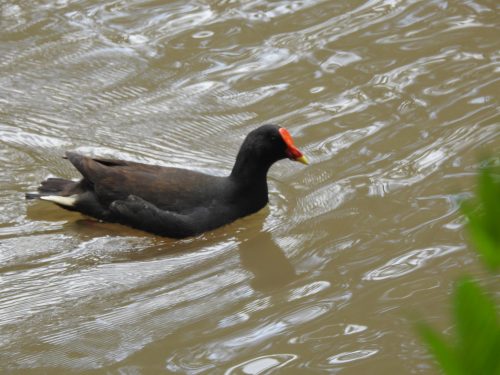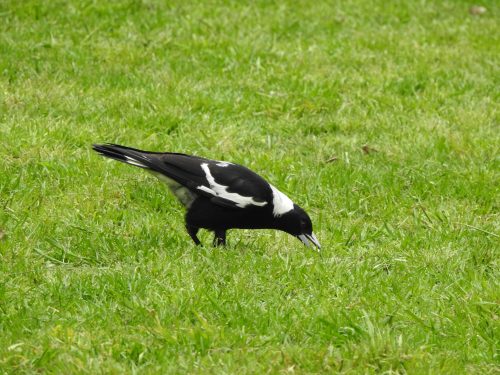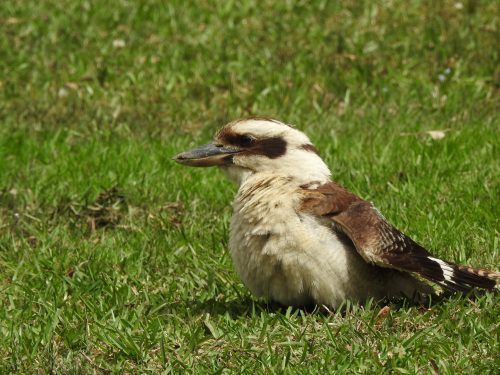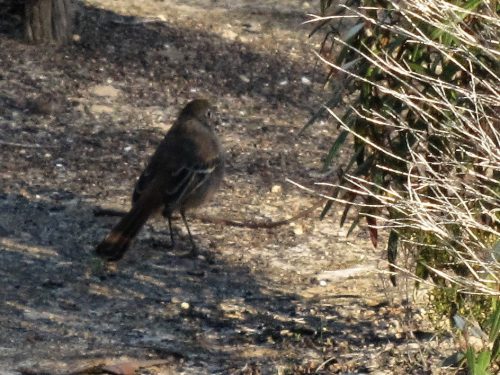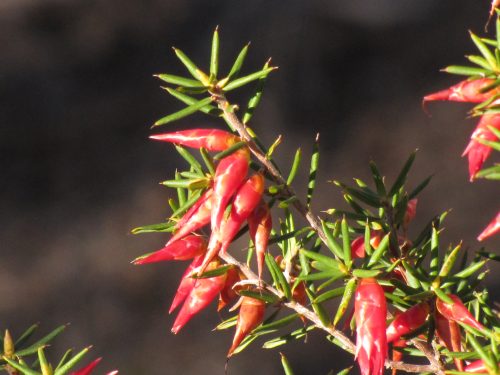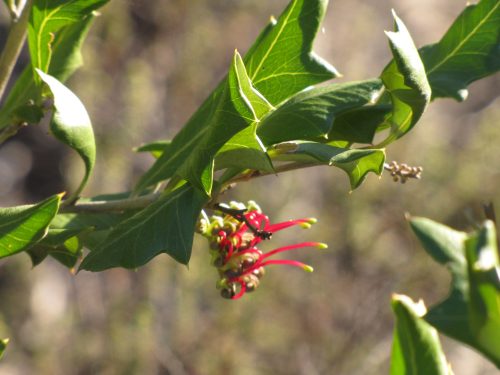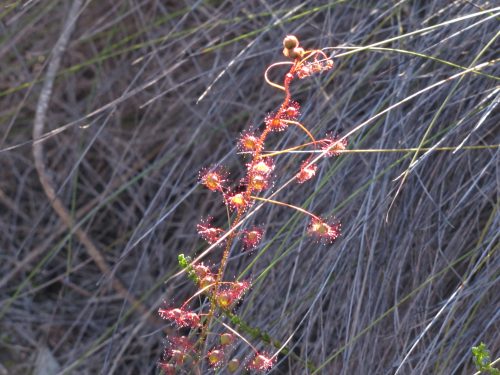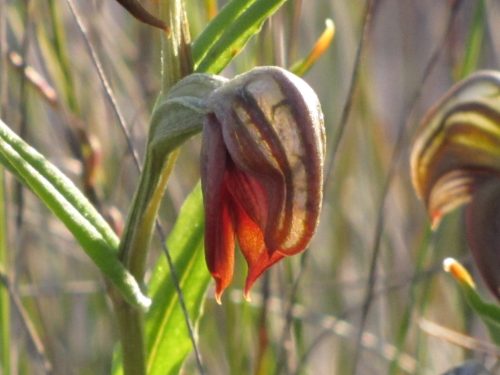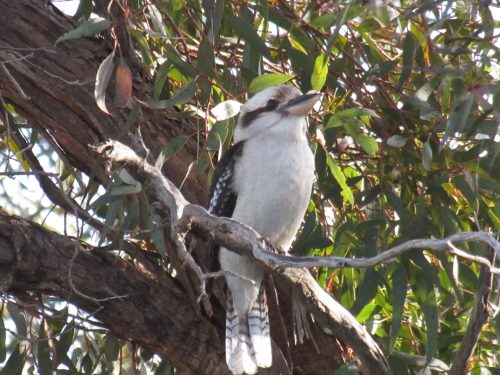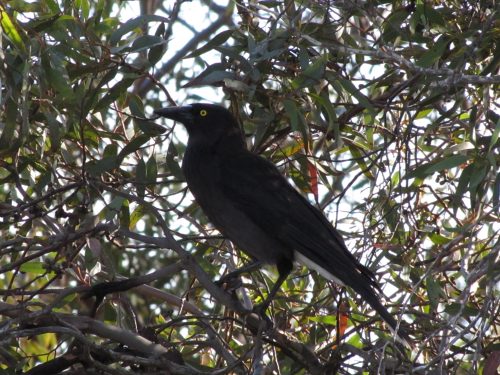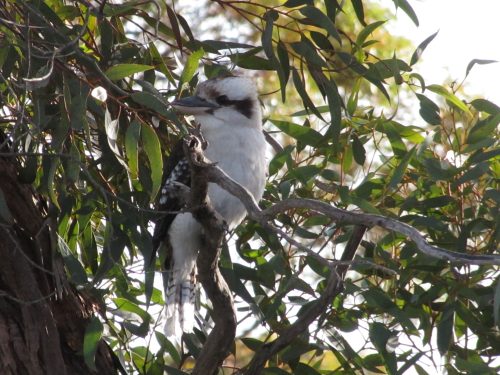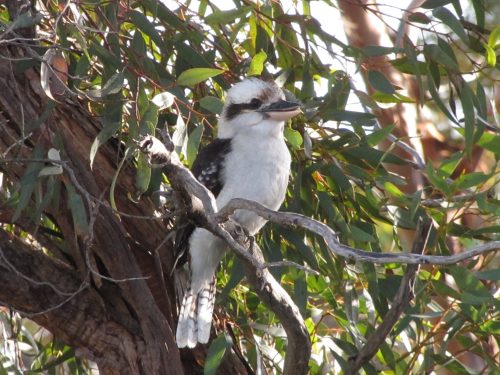A Family of Currawongs
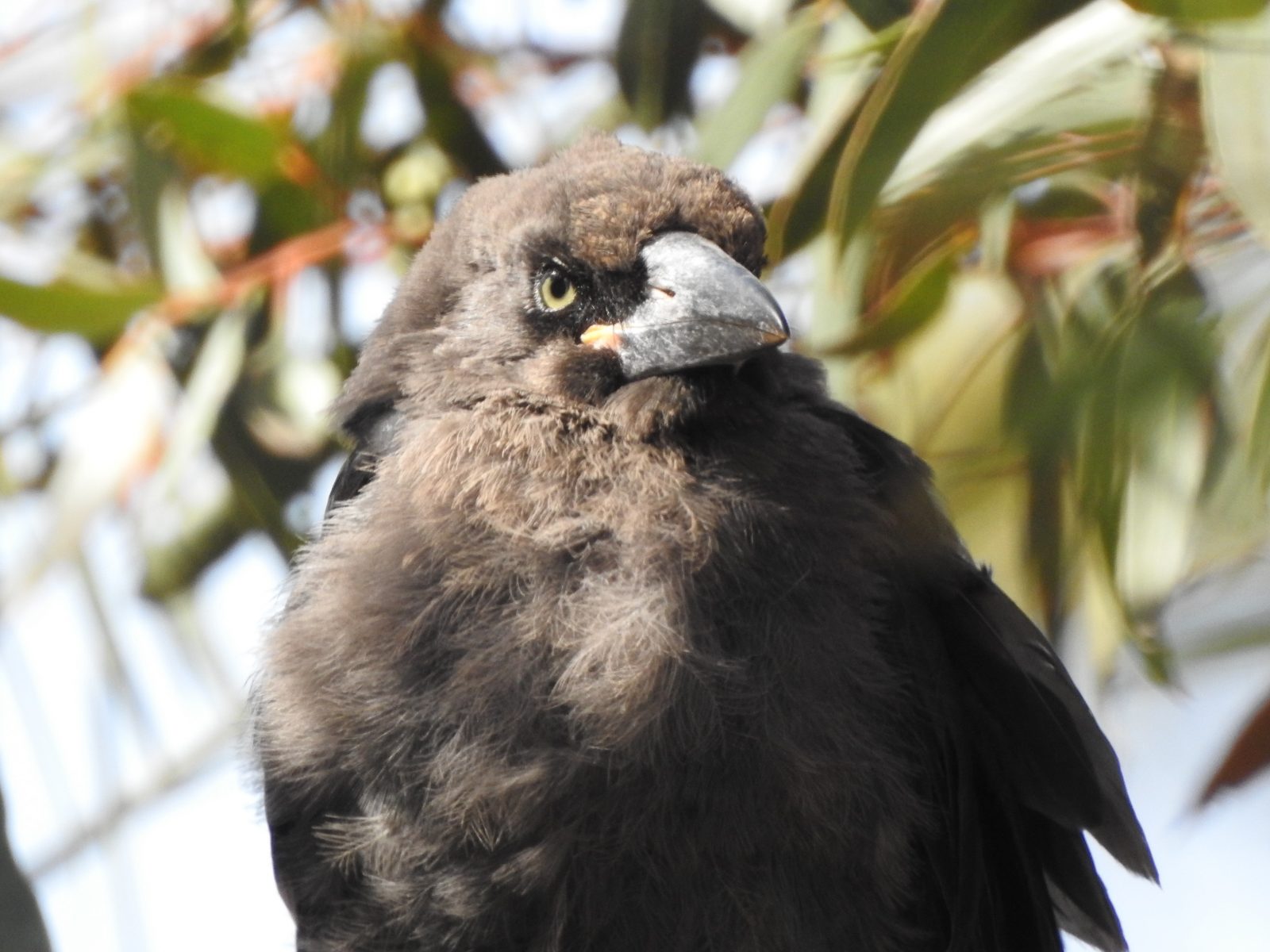
I find it interesting that I haven’t heard or seen many Grey Currawongs in my garden in recent months. I live on a five-acre block of mallee scrub, garden plants and a few fruit trees on the western edge of Murray Bridge, about an hour’s drive south-east of Adelaide, South Australia.
Occasional visitors
Currawongs are usually only occasional visitors to my garden despite the species being widespread and relatively common in this region of the state. I sometimes hear them calling up the hill from my home, usually around sunset. In past times I have heard or seen this species every few days. This year their calls and visits have been very infrequent until the last few weeks.
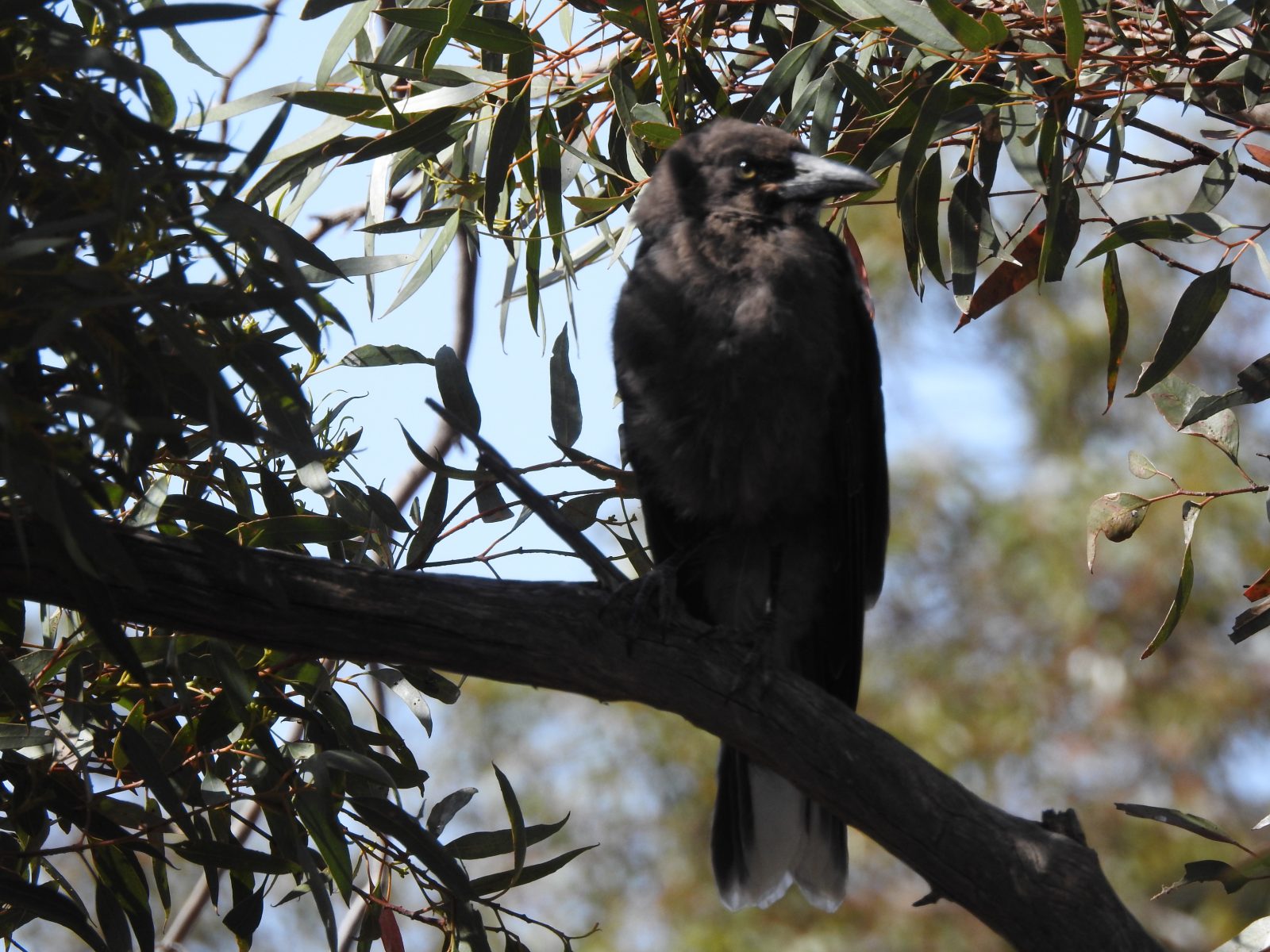
A family visit
A few days ago I was treated to a visit from a whole family of Grey Currawongs. I suddenly had four of them quite close to the house, one adult and three juveniles. The young ones kept begging for food while the adult was busily trying to satisfy the hungry tribe. The young ones had only just fledged and were still looking quite fluffy and a bit scruffy.
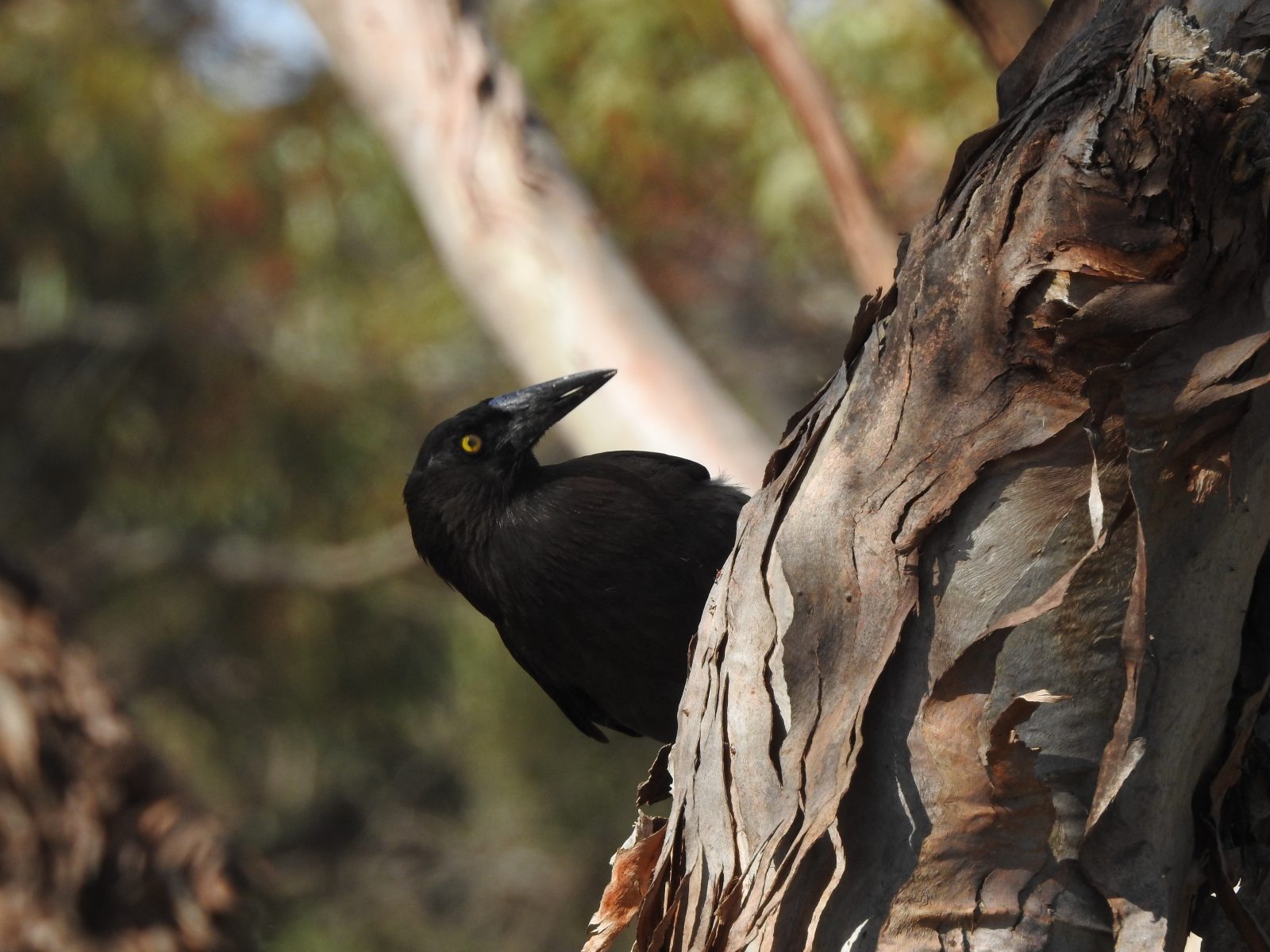
Upset local residents
With so many currawongs in a small part of my garden, it is not surprising that the local residents were quite upset. Currawongs are very quick to take advantage of a tasty morsel from another’s nest, not being fussy whether it is an egg or a chick. The local Magpie Larks were sitting on eggs just a few metres away. Their strident shrieking had little effect on the currawongs.
The local honeyeaters, Red Wattlebirds, New Holland Honeyeaters and a solitary Singing Honeyeater all kicked up a ruckus and the nesting Common Starlings joined in the protest as well.
After a few minutes the currawongs moved on elsewhere. Several of them have passed through my property in the days since, but the protests were much more subdued.
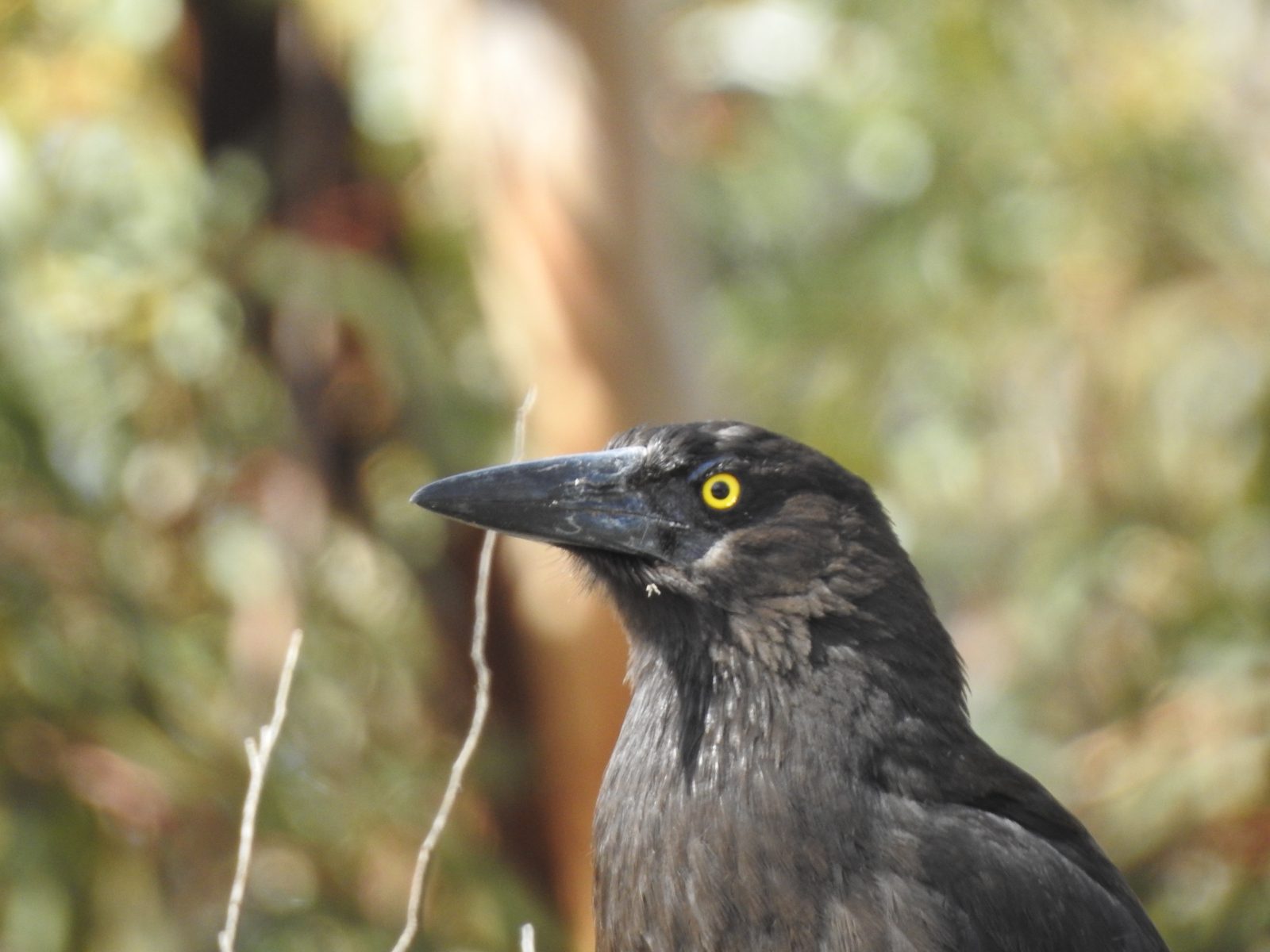
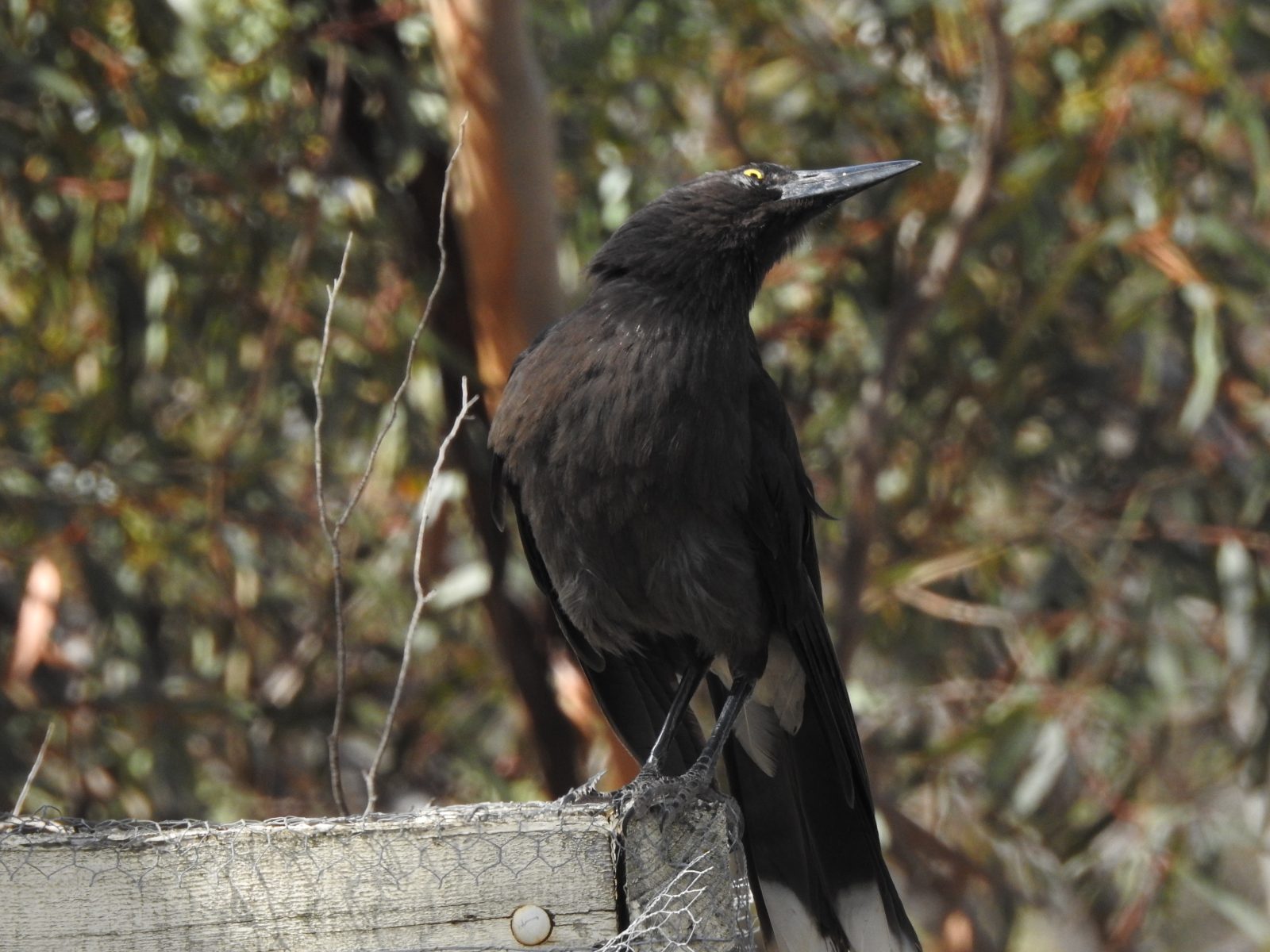
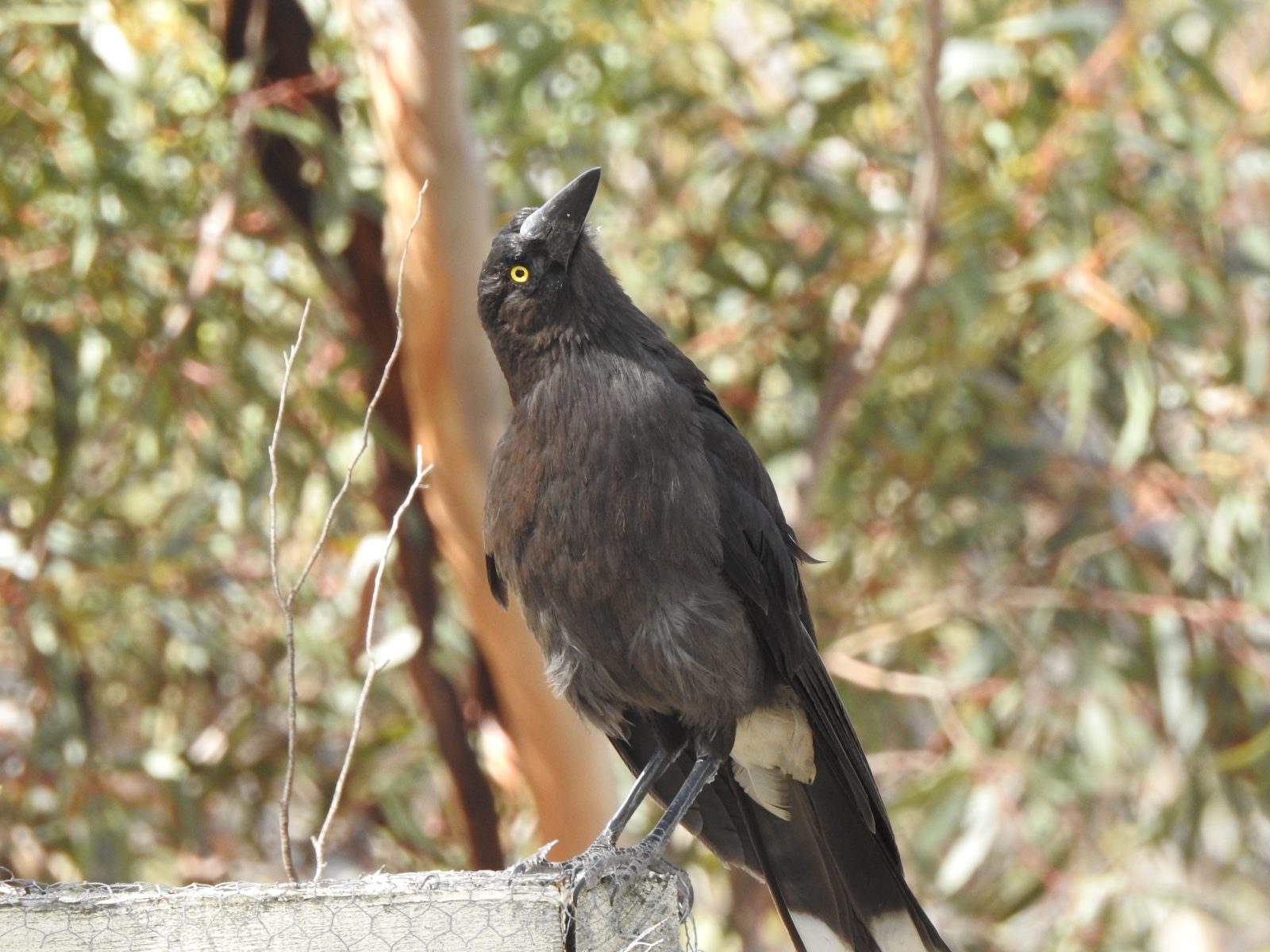
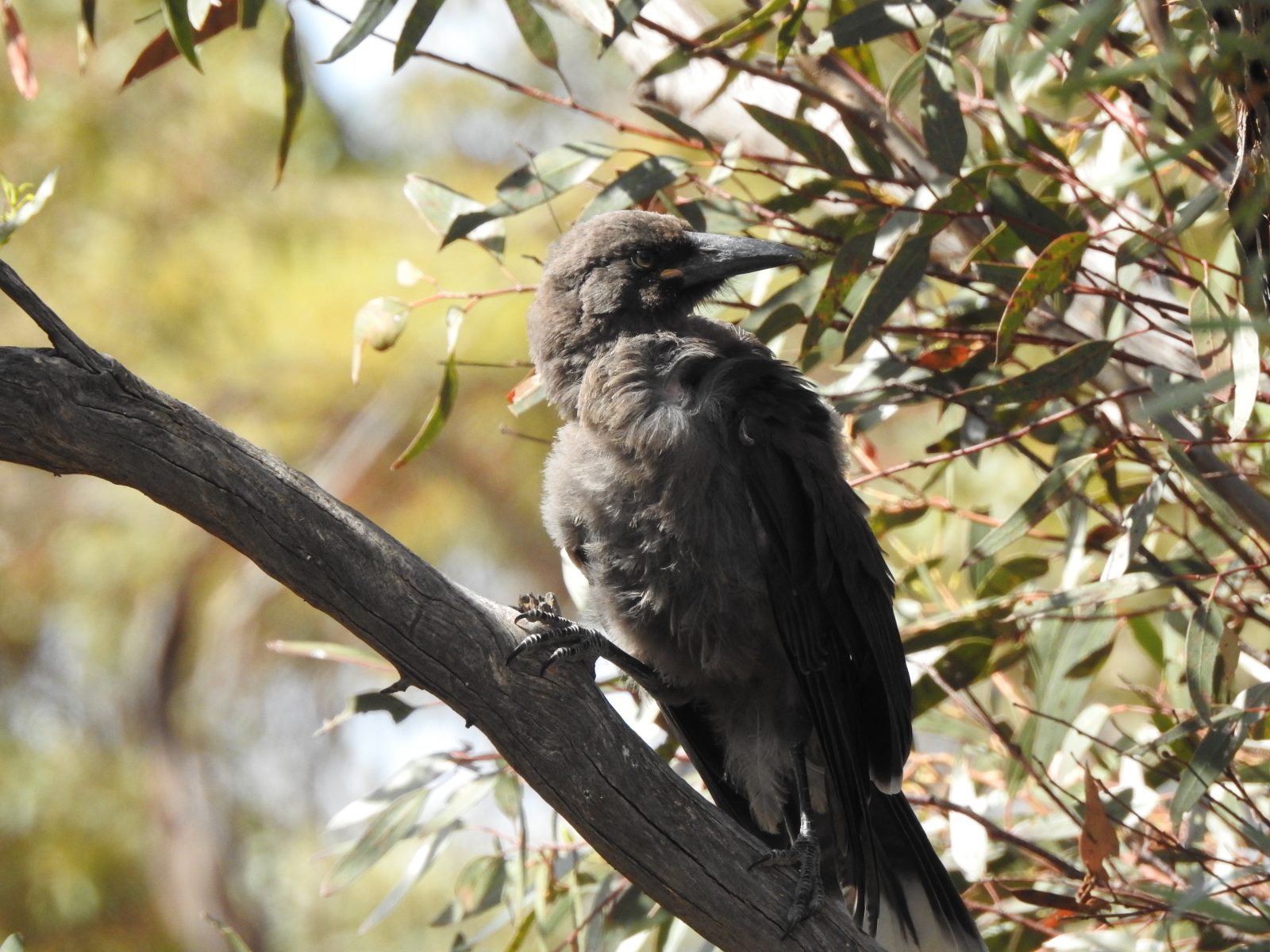
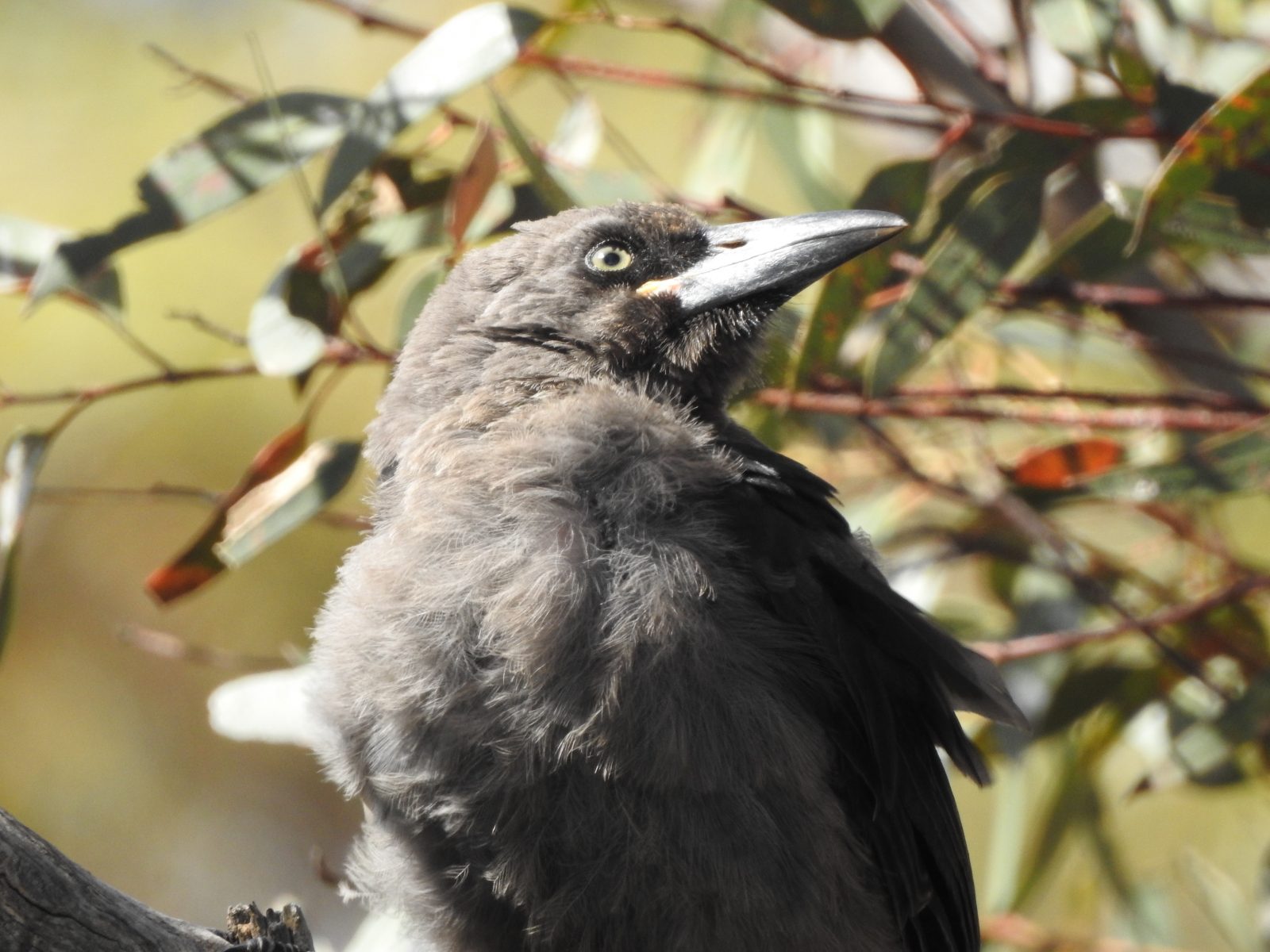
It’s Magpie Swooping season again
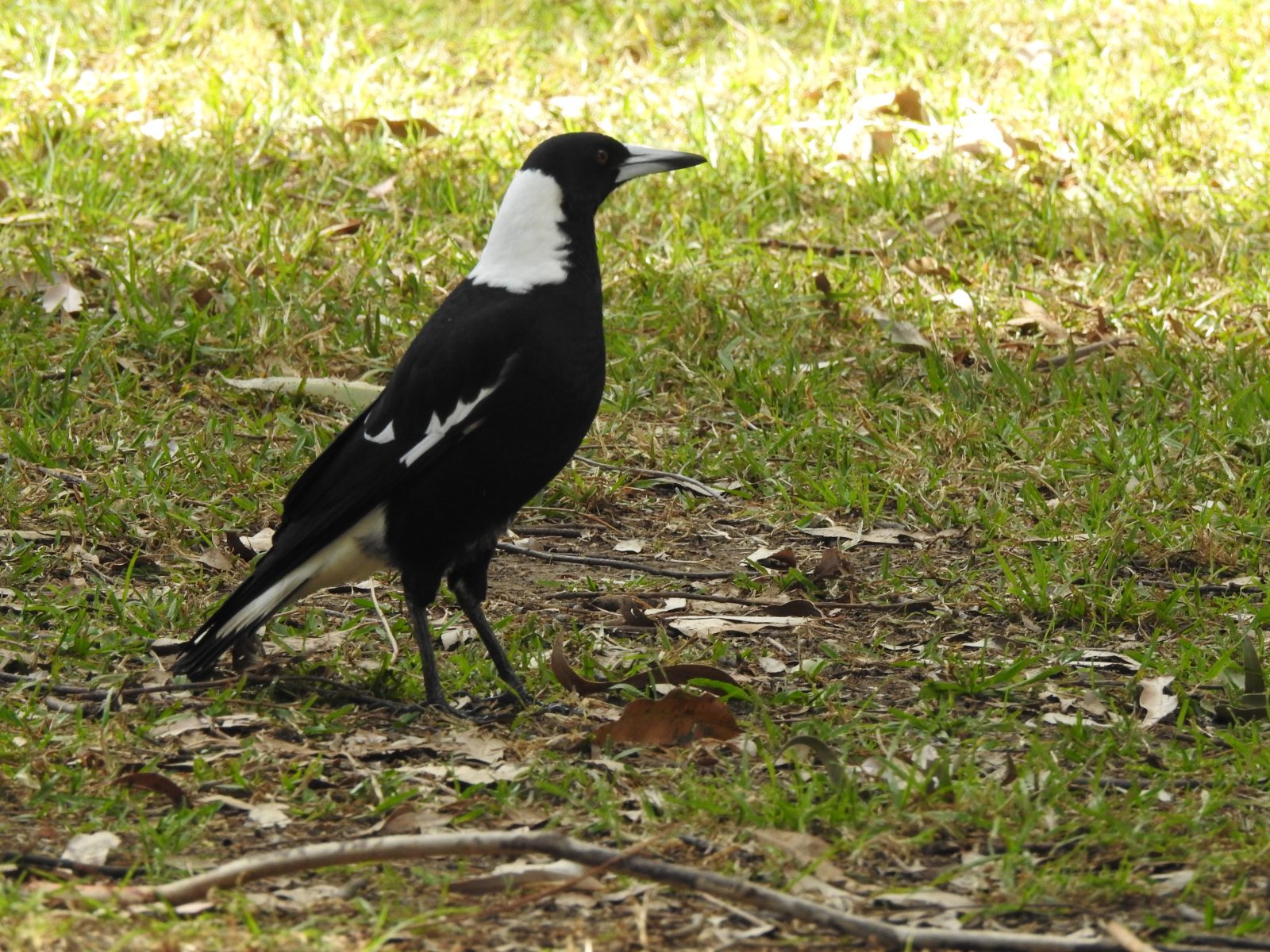
It is magpie swooping season again throughout Australia where Australian Magpies are found. That’s pretty much everywhere in Australia. This species is usually quite happy to co-exist with humans and will go about its life quite independently of us. They are relatively common in urban areas and very common in rural and farming environments.
Aggressive birds
Some individual Australian Magpies, however, have a very aggressive behaviour towards people during the nesting season, swooping them if they come anywhere near to their nest. This is particularly troublesome to young children who are sometimes terrified by a swooping bird. The elderly are also vulnerable as this story relates. Sadly, the elderly man who fell from his bicycle trying to get away from a swooping magpie severely injured his head when he hit a fence. He later died in hospital.
While this incident had a tragic outcome, this is not normal. Certainly, many people are terrorised by nesting magpies. Some have incurred serious injuries as a result, including eye injuries. My own sister-in-law suffered serious cuts to her scalp during a magpie attack when she was quite young. I also seem to remember a newspaper report of a cyclist who, in attempting to avoid being swooped actually rode into the path of a car and was injured by the car but not the bird.
Over the years I have written quite a few articles addressing this issue. I have listed some of them below. Some of these articles give advice on how to avoid getting swooped.
Further reading:
The Problem of Swooping Magpies
Do Blackbirds Swoop? Dealing with Aggressive Birds
Pesky Plovers – dealing with swooping birds
I invite readers to add their comments on how they deal with swooping birds. Or, you can comment on experiences with pesky birds.
Good birding – and stay safe.
Trevor
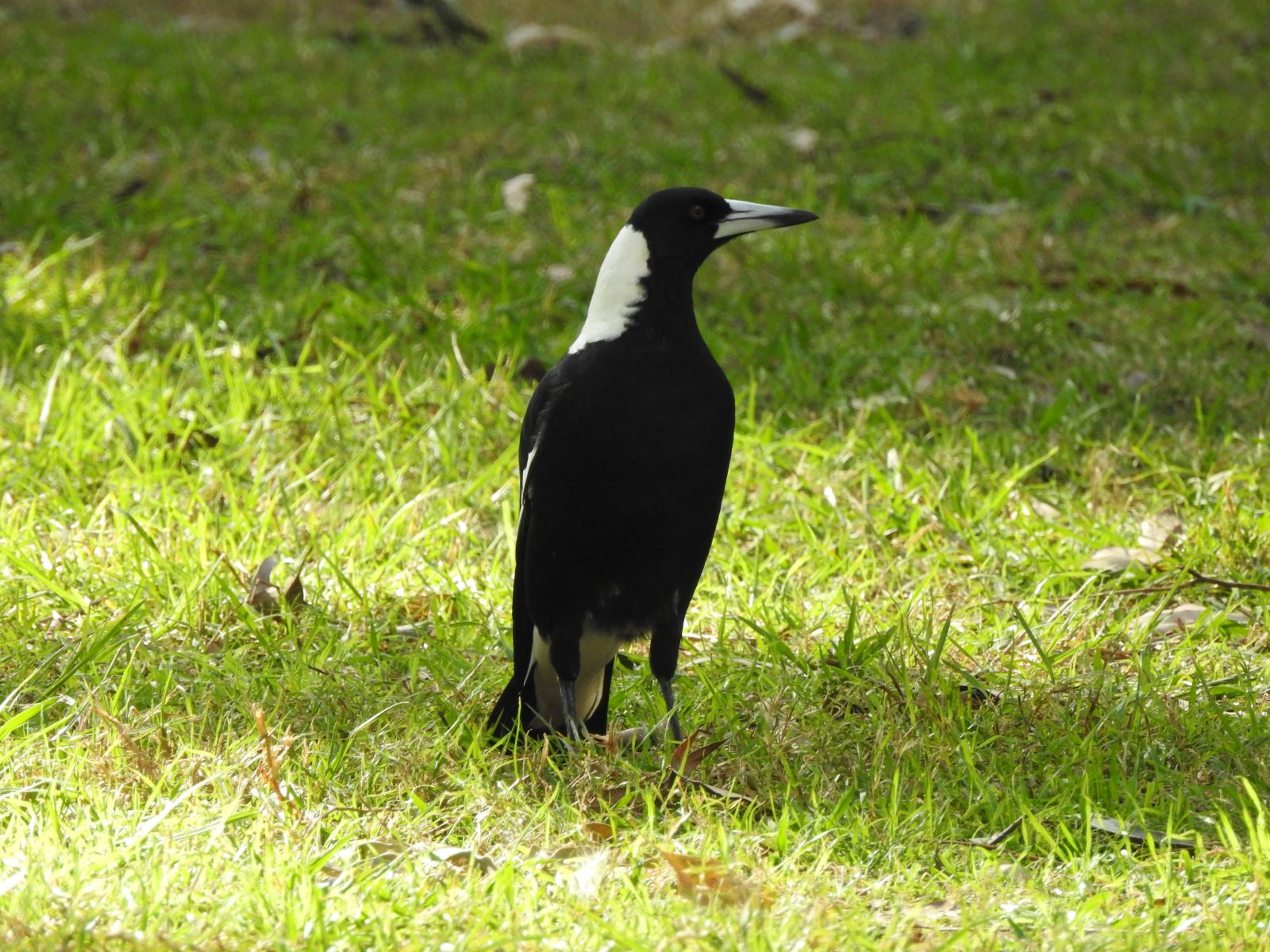
Some Birds of the Lane Cove National Park
Over recent days I have posted some photos and articles about some of the birds I saw and photographed last month on a visit to the Lane Cove National Park in Sydney. I have visited this park on many occasions over recent years because it is only about a ten-minute drive from my son’s home.
Today I wish to post a compilation of some of my other photos taken on that visit in October. The first photo (above) is of a handsome looking Pied Currawong. This is a common and sometimes noisy bird in the park. Because of its loud, forest-penetrating call and its large size, it is quite conspicuous. At home in Murray Bridge, SA, I have the Grey Currawong as a regular visitor to my garden. Although it is also a prominent bird, it lacks the stark colours of the Pied variety.
The quiet and unassuming Black-faced Cuckoo-shrike is another bird I have often seen in the national park. It quietly goes about its life without too much noise and fuss. Its quiet and lovely churring call is diagnostic. Although it is mostly coloured plain grey, in certain light conditions it can appear almost bluish. As a child growing up in rural South Australia I seem to remember that this species was called a ‘blue jay’ while the White-winged Chough was a ‘black jay.’ That makes a lot of sense. The Black-faced Cuckoo-shrike is another regular visitor to my home garden.
On my visit to the Lane Cove National Park last month I was surprised by the lack of water birds along the river. I saw a solitary Little Egret, several Pacific Black Ducks and about three Dusky Moorhens, one being shown in the photo above. I also saw several groups of Australian Wood Ducks along with a few ducklings but nothing else. No cormorants, coots, Purple Swamphens or other species of duck.
Throughout the Lane Cove National Park, one can also observe the black-backed sub-species of the Australian Magpie. This is the common magpie around the Sydney area. At home in Murray Bridge SA, I have the White-backed Magpie as a resident breeding species in my garden. While there are magpies throughout the Sydney region, they are nowhere near as common as I am used to in the rural areas of South Australia. That is a pity because so many people are missing out on hearing the beautiful song of the magpie.
My last photo today is of one of the most loved Australian Birds, the Laughing Kookaburra. Instantly recognised by most people, enjoyed by many upon hearing its hearty laughter, it is one of our iconic, much-loved national symbols.
What most people do not realise is that this seemingly delightful bird species has a darker side to it. On more than one occasion I have seen kookaburras take sausages off of a hot barbecue plate, snatch food from the picnic table at my side, defecate on a picnic table from a branch above, and generally harass picnickers for free handouts of human food.
Please don’t feed them deliberately as human food is actually detrimental to their health. Please do not feed any of our native birds and animals; it is not good for them.
I’ll get off my soapbox now.
Good birding.
Trevor
P.S.: I would love to hear from my readers about their close encounters with our bird species. Use the comments section below.
A visit to Monarto Conservation Park
A few months ago my wife and I paid a visit to the Monarto Conservation Park in South Australia. This park is south-east of Adelaide and south-west of Murray Bridge where we live. It is about a twenty-minute drive from home. The park is mainly mallee scrub but it contains a good range of small and medium-size native wildflowers, some of which I have shown in the photos below.
On the day we visited, I did not see or hear all that many birds. This is not unusual; some days are like that and very few are seen, while other days you don’t know where to look first – there are so many birds to watch. On this occasion, the only bird I managed a reasonable photo of is the Southern Scrub-robin shown in the photo above. I have found this species to be a somewhat shy bird that skulks in the undergrowth. I followed this individual for about five minutes before it disappeared from view. I could hear it – and others – calling from time to time, but none of them came out in the open to enable a better shot.
This park boasts a wide range of native Australian wildflowers. There always seems to be something flowering, so honeyeaters are common in the park. One can also expect to see, or hear, both types of Pardalote, several species of pigeons, parrots and lorikeets, as well as the elusive Shy Heathwren. Fairy-wrens are also common in the park, as are several species of birds of prey, usually seen soaring overhead. You can also see Australian Magpies, Grey Currawongs, Little Ravens, Grey Butcherbirds and several kinds of swallows.
Access to the park is via Ferries-McDonald Road, a sealed road off the South-eastern Freeway. There is a carpark on the right as you travel south. There are no facilities in or roads through the park, but there is a well-defined walking track starting at the carpark. This is an easy 45-minute walk through a variety of habitats in the north-eastern corner of the park. All of the photos featured today were taken along this walking track in early July of 2017.
An unusual visitor
Garden Birds
On my database, I record the birds I see in our garden, or on our five-acre block, or flying overhead. I have done this every month for well over 30 years now. In more recent times, I have started recording them on a weekly, and sometimes daily, occasions. This has built up a great base of information about the birds we have resident (present every day), regular visitors (every few weeks or months) and occasional (perhaps one or two sightings a year). So far, the tally is over 110 different species. (I don’t know the exact figure because my database is not quite up to date.)
Rare Visitors
Surprisingly, one of the rarer occasional visitors is the Laughing Kookaburra. This species is widespread throughout southern and eastern Australia and is common in many places. It is a widespread species here in the Murray Bridge region of South Australia too, especially along the Murray River. Despite that, it is a rare visitor to our garden. In fact, until a few weeks ago, our last sighting was just over ten years ago.
Harassment
The individual which paid us a recent visit did not have a good time. As I was getting some photos – shown on today’s post – a Grey Currawong kept on harassing it until it flew off in disgust at the poor welcoming party. I guess that the Currawong chased the kookaburra away to discourage it from visiting its nest, though I have not seen any evidence of the Grey Currawongs nesting so far this year. The Currawong itself is not slow about robbing the nests of other birds, either.
Further Reading:
- Grey Currawong – Birds in Backyards site
- Laughing Kookaburra – Birds in Backyards site
- Lunch Snatching Kookaburra
- A Laughing Kookaburra comes to lunch
